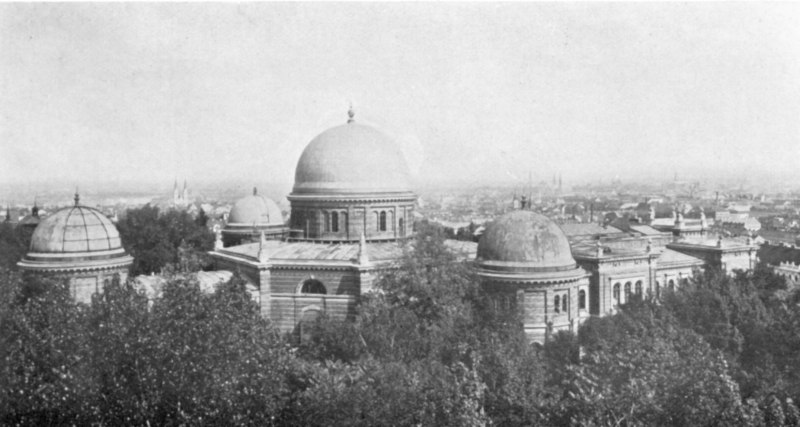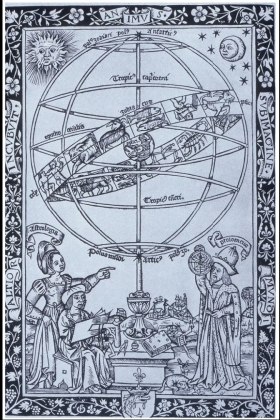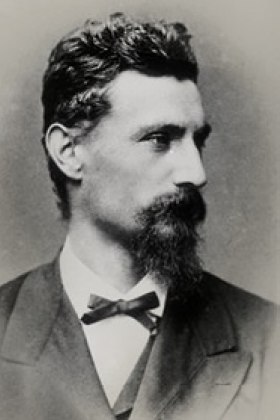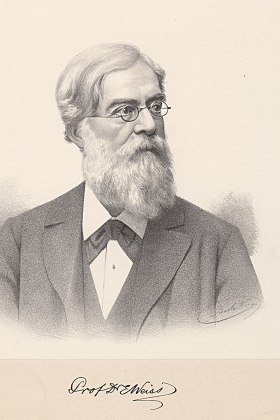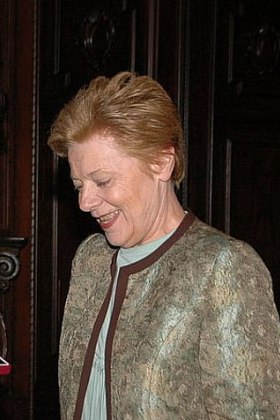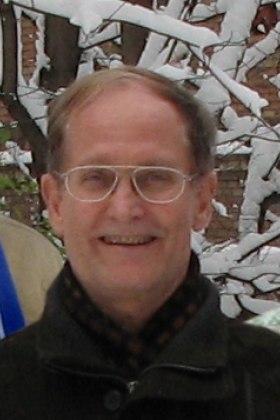Astronomy | The Vienna Observatory through the ages
Ever since the University of Vienna’s foundation in 1365 astronomy played an important role here. Leading figures from the history of astronomy worked at the young university and helped it come into its first prime, among them Heinrich von Langenstein, Georg Peuerbach, Johannes Regiomontanus and Johannes von Gmunden.
One of these scholars’ most important occupations was observing the movement of heavenly bodies to improve the calendar. Particulary Peuerbach, who came into contact with antique texts on his trips to Italy and circulated them in Vienna, did a great service to this science. Among other things, he introduced the previously unknown trigonometric functions to the Western world. His student Regiomontanus completed his teacher’s work.
Although great accomplishments in the field of astronomy had already been achieved in the university’s early years, almost 400 years passed until the Alma Mater Vindobonensis received its own observatory in 1755.
Marinoni’s private observatory
Vienna’s first observatory was founded by the imperial mathematician Johan Jakob de Marinoni from Udine (1676-1755). In 1730 he built a two-story tower on top of his private house in the Mölkerbastei, which he set up as an observatory. Even the instruments were fashioned in his private house. It was partially financed by Marinoni himself.
The Jesuit Astronomical Tower
A few years later, in 1733, the Jesuits decided to build their own observatory at the corner of today’s Postgasse and Bäckergasse in the shape of a 45m tall tower. Due to the Order’s active collecting activities, today’s University Observatory still has large parts of its historic book collection.
The first University Observatory
After Marinoni died in 1755, his instruments were bequeathed to the Empire. Maria Theresia donated them to the university. This donation gave the motivation to add an observatory to the almost finished university building at today’s Ignaz-Seipel-Platz (Academy of Sciences). All planning was done by the Jesuits.
The first observatory director, Jesuit Maximilian Hell (1720-1792), already used the observatory to great effect. Due to his observations and the publishing of one of the first astronomical yearbooks (Ephemerides Astronomicae, 1757-1806), Hell and the Vienna Observatory were internationally held in high esteem. His most important legacy undoubtedly is his work on the two Venus transitions in 1761 and 1769. The first he observed from Vienna, the second as the northernmost observer in Vardø, in northern Norway. Together with other observations this yielded the most exact calculations of the distance to the sun for decades.
After Hell’s death in 1792 he was succeeded by Franz de Paula Triesnecker (1745-1817) as director of the Vienna Observatory. He mainly studied higher geodesy and precisely surveyed Lower Austria. Many of Triesnecker’s publications show his expertise in triangulation.
The situation in the late 18th and early 19th centuries
The tower atop the university building that housed the observatory was built out of wood and turned out to be too unstable for precise measurements. Particularly tremors due to horse-drawn carriages and winds restricted the accuracy of astronomical measurements. Thus, in the early 19th century, plans were made to move the observatory to a better location.
University assistant Johann Tobias Bürg (1766-1835) wrote a report on the construction of a new observatory. It was based on plans for the Gotha Observatory, developed by Franz Xaver von Zach (1754-1832). Bürg explicitly describes the building and furnishing of a new observatory and the requirements for a calm location as well as traffic connections for the employees. This report can still be found in the Vienna Observatory archive.
Tobias Bürg not only made a name for himself in connection with the construction of a new observatory. He also developed a complex movement theory of the moon after analyzing more than 3000 observations of the moon and received the first prize of a competition at the Parisian Institut National in 1799 alongside French astronomer Alexis Bouvard (1767-1843).
In 1808 Bürg suffered a sudden hearing loss during an astronomical observation. This circumstance kept him from himself becoming director of the Vienna Observatory. He nevertheless still temporarily led it for a year after Triesnecker’s death in 1817.
The Littrow Era
In 1819 a new man entered the study of astronomy in Vienna. Johann Joseph von Littrow (1781-1840) had taught himself in astronomy and mathematics, came to Vienna and received a professorship in higher mathematics. At the same time he was made director of the Vienna Observatory. From the beginning, Littrow wanted to build a new observatory. He reorganized the existing university observatory and worked closely with Simon Plößl, a Viennese optician. Littrow’s plans for a new observatory were examined by his temporary predecessor Tobias Bürg. Particularly the question of where to erect the new building and how to outfit it were causes of disputes.
His son, Carl Ludwig Littrow (1811-1873), managed to finally implement his father’s plans in the 1870s. The architects Fellner and Helmer, known for building theaters and opera houses, were tasked with constructing the observatory. The foundation stone was laid in 1874. With a length of 101m and width of 73m it still is the the largest architecturally enclosed observatory building in Europe.
Littrow did not see the end of construction – he died in 1877. It took until 1882 until the Institute for Astronomy had been fully moved to the new building. It was formally opened on June 5, 1883, with Emperor Franz Joseph I in attendance.
At that time the Vienna Observatory housed the largest refracting telescope in the world with a lens diameter of 68cm and a focal length of 10.5m. Until today the Large Refractor is one of the ten largest refracting telescopes ever built.
Significance of the Vienna Observatory
Under Maximilian Hell the Viennese astronomical research’s good reputation had already been established. The Vienna Observatory gave not only him, but also important figures such as Johann Joseph Littrow, Theodor Egon Ritter von Oppolzer and Johann Palisa a worthy scientific home. Many still famous books were written in Vienna, such as Littrow’s Die Wunder des Himmels, Oppolzer’s Canon of Eclipses and Johann Palisa’s star maps (Palisa-Wolf maps)..
Sources: Archive of the Department of Astrophysics (Türkenschanzstrasse 17, 1180 Vienna); Archive of the University of Vienna
Zuletzt aktualisiert am : 17.01.2024 - 21:25
-
Heinrich von Langenstein
-
Georg Aunpekh von Peuerbach
-
Johannes Regiomontanus
-
Johannes von Gmunden
-
Maximilian Hell (Höll)
-
Georg Tannstetter
-
Joseph Johann von Littrow
-
Karl Ludwig von Littrow
-
Johann Palisa
-
Theodor Ritter von Oppolzer
-
Josef von Hepperger
-
Franz Joseph I. (Habsburg-Lothringen)
-
Edmund Weiss
-
Anneliese Schnell
-
Gerhard Hensler
-
Michel Breger
-
João Alves



